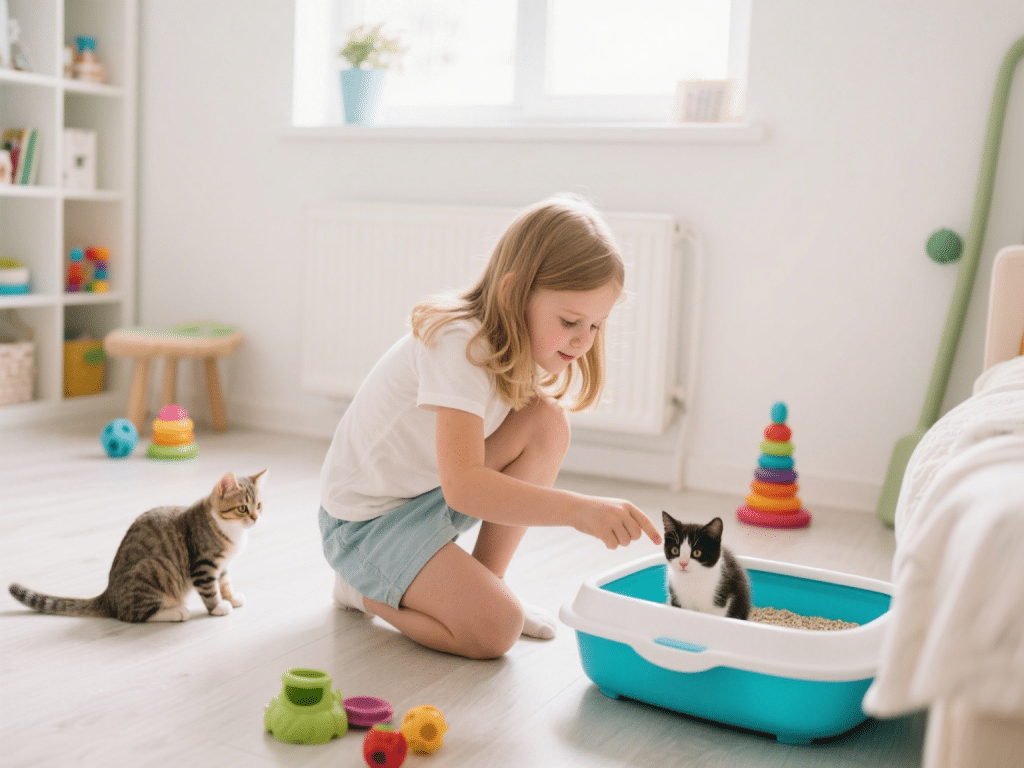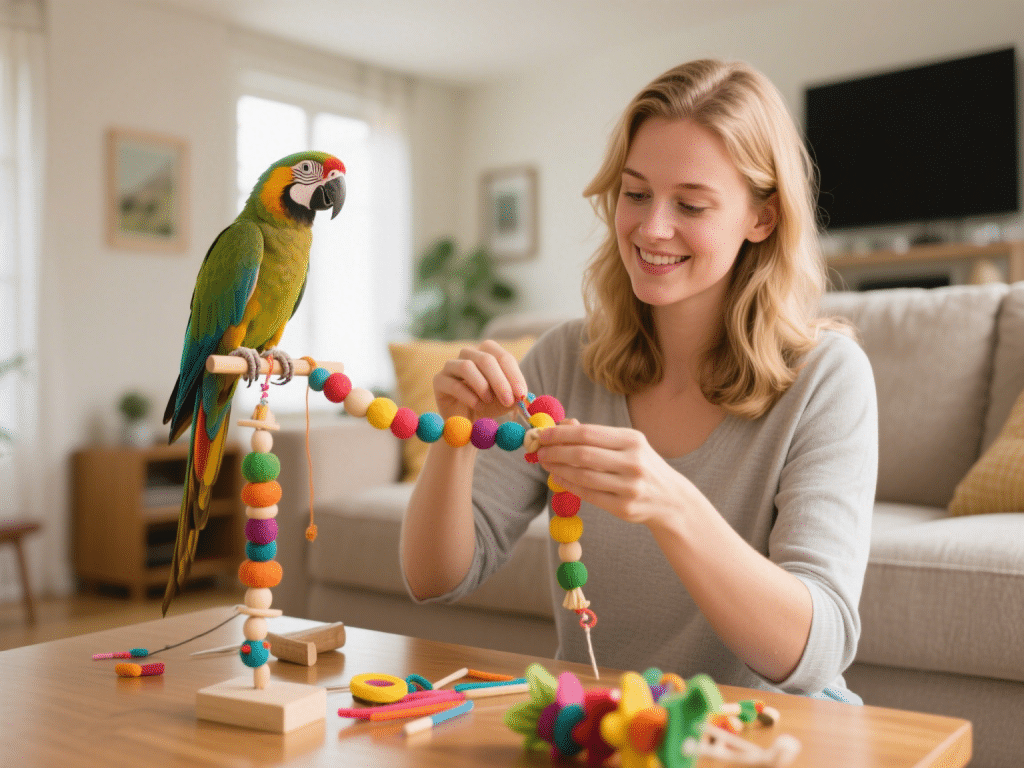Introduction
Designing a backyard that prioritizes both your cat’s curiosity and safety can transform an ordinary outdoor space into a secure haven. By integrating thoughtful landscaping, sturdy enclosures, and interactive features, you’ll not only enrich your feline’s daily routine but also enjoy peace of mind. This guide outlines practical strategies—grounded in expert recommendations—to craft a cat-friendly backyard that balances stimulation with security.
1. Assessing Your Outdoor Space
Measure and Evaluate Boundaries
Inspect perimeter fences: Check for gaps, weak spots, or climbable sections.
Inventory existing vegetation: Identify any toxic plants (e.g., lilies, azaleas) and mark areas exposed to heavy traffic or potential predators.
Consider Local Climate and Terrain
Sun and Shade Exposure: Observe sun patterns to ensure cats have cool retreats during hot afternoons.
Ground Cover: Determine whether grass, gravel, or soil predominates. Select surfaces that are gentle on paw pads and easy to maintain.
Understand Local Wildlife and Predators
Research regional risks (e.g., raccoons, hawks).
Adjust design to deter unwanted visitors—such as installing motion-activated lights or secure feeding stations away from edges.
2. Secure Fencing and Boundaries
Cat-Proof Enclosures (“Catio” or Full-Backyard Netting)
Catio Design Essentials
Use rust-resistant wire mesh with small grid spacing (≤1 inch) to prevent escapes.
Anchor mesh into the ground at least 6 inches deep to thwart digging.
Incorporate a secure overhead cover to protect against climbing and jumping.
Perimeter Netting Solutions
Install angled “outward” extensions at the top of fences (approximately 45°), angled toward the yard interior, to discourage climbing attempts.
Tension nylon-coated wires along the top rail to create a “lean-in” effect—cats are less likely to navigate inverted angles.
Visual Deterrents and Protective Sleeves
Apply PVC or steel “cat fence rollers” to the top of existing fences; rollers spin when a cat’s weight presses, causing them to back away.
Clip reflective strips or lightweight wind chimes near boundaries; sudden movement or noise can deter exploration near edges.
Gate and Entry Security
Install latches that require two-step opening (e.g., push-and-slide designs) to prevent accidental exits.
Add weatherproof weather-stripping or brushes along gate seams to eliminate gaps.
3. Cat-Friendly Landscaping
Safe Plant Selection
Non-Toxic Grasses & Herbs: Catnip, wheatgrass, and cat thyme encourage sniffing and nibbling without risk.
Avoid Toxic Species: Eliminate any lilies (Lilium spp.), poinsettias, azaleas, and oleander. Consult the ASPCA toxic plants list for guidance.
Natural Pathways and Ground Covers
Soft Surfaces: Use pea gravel or smooth river rocks in play zones to protect paw pads.
Mulch Alternatives: Avoid cocoa husk or pine bark blends (potential ingestion hazards). Instead, use kiln-dried hardwood chips in limited areas.
Vertical Exploration Opportunities
Sturdy Climbing Structures: Install weather-treated wooden posts or cat-safe trees. Attach horizontal perches at varying heights (1–3 feet, 3–5 feet).
Wall-Mounted Shelves: Bolt composite shelves to sturdy walls, ensuring no sharp edges.
4. Enrichment and Play Areas
Interactive Stations
Puzzle Feeders and Treat Dispensers: Place under shaded alcoves to encourage foraging instincts.
Hidden Nook Boxes: Convert old wooden crates into sheltered hideaways lined with weatherproof cushions.
Climbing and Scratching Posts
Position sisal-wrapped posts near windows or entry points to entice cats away from fence exploration.
Rotate or relocate posts every few weeks to sustain interest.
Toys and Movement Incentives
Wind-Activated Toys: Hang lightweight mobiles among shrubs to sway with the breeze.
Water Features: A shallow fountain or dripping rock can intrigue cats and help them stay hydrated.
5. Shelter, Shade, and Rest Zones
Weatherproof Cat Houses
Place insulated, elevated shelters in sunny spots for warmth, and under trees or bespoke roofs for shade.
Ensure elevated bases (≥2 inches) to prevent moisture buildup.
Natural Shade Solutions
Encourage vine growth (e.g., cat-safe jasmine) over pergolas to create dappled sunlight.
Plant fast-growing shrubs (e.g., hibiscus, lantana) along the southern fence for late afternoon cover.
Resting Platforms
Construct multi-level wooden platforms outfitted with removable, washable cushions.
Incorporate removable shade sails (UV-resistant) to modulate sun exposure seasonally.
6. Health and Safety Considerations
Pest Control and Prevention
Flea and Tick Mitigation: Maintain trimmed grass (≤3 inches) and apply veterinary-approved treatments.
Rodent-Proofing: Seal gaps under sheds and proceed with snap-traps or enclosed bait stations (placed outside cat reach).
Water Quality and Availability
Replace water daily; position bowls in shaded areas to stay cool.
Consider elevated bowls to deter insects and debris.
Supervision and Training
Train cats to respond to outdoor recall cues using treats or clicker training before granting full access.
Use GPS-enabled or breakaway collars with ID tags to facilitate recovery if a cat escapes.
Emergency Access
Keep sliding-panel windows or quick-release latches for emergency entry in case of fire or medical needs.
Equip the yard with a basic first-aid kit (styptic powder, antiseptic wipes, gauze pads).
7. Seasonal Maintenance and Adaptations
Spring and Summer
Inspect fences monthly for erosion or damage caused by heavy rains.
Refill water stations hourly during heatwaves and consider installing a solar-powered misters near play zones.
Autumn
Rake leaves promptly—wet leaves can harbor mold and slipping hazards.
Move potted plants indoors if nighttime temperatures drop below 50°F (10°C).
Winter Preparation
Provide insulated bedding in shelters; use heated pads rated for outdoor use.
Remove icicles and clear snow buildups promptly, ensuring paths remain accessible.
Conclusion
By carefully planning your backyard to include secure boundaries, safe landscaping, and engaging enrichment areas, you’ll create an environment where your cat can explore, exercise, and relax without compromising safety. Regular maintenance, seasonal adjustments, and proactive supervision ensure that the space remains both inviting and hazard-free year-round. With these strategies in place, your backyard can become a sanctuary that satisfies your cat’s instincts and offers you peace of mind.










Comments on " How to Create a Cat-Friendly Backyard: Tips and Safety Advice" :